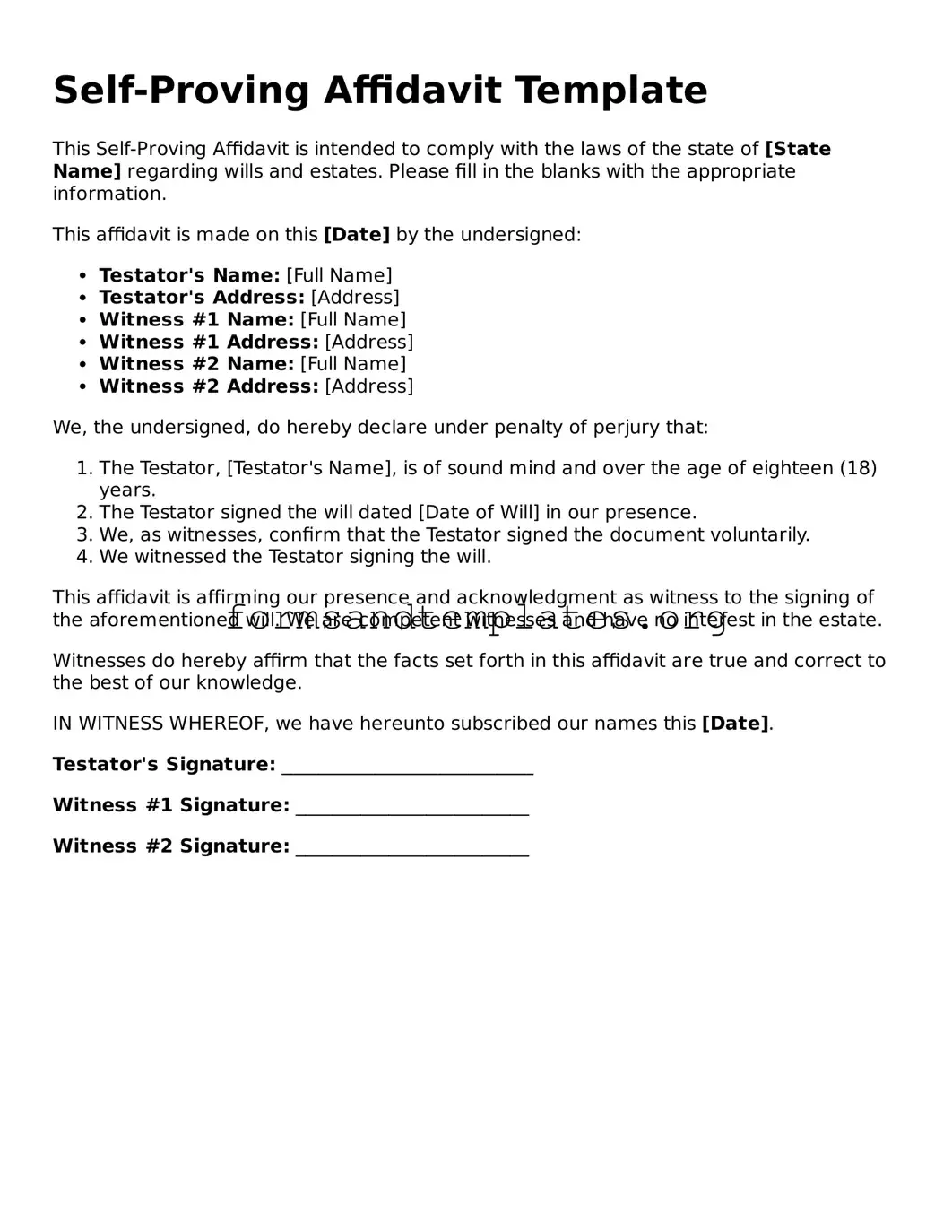Self-Proving Affidavit Template
This Self-Proving Affidavit is intended to comply with the laws of the state of [State Name] regarding wills and estates. Please fill in the blanks with the appropriate information.
This affidavit is made on this [Date] by the undersigned:
- Testator's Name: [Full Name]
- Testator's Address: [Address]
- Witness #1 Name: [Full Name]
- Witness #1 Address: [Address]
- Witness #2 Name: [Full Name]
- Witness #2 Address: [Address]
We, the undersigned, do hereby declare under penalty of perjury that:
- The Testator, [Testator's Name], is of sound mind and over the age of eighteen (18) years.
- The Testator signed the will dated [Date of Will] in our presence.
- We, as witnesses, confirm that the Testator signed the document voluntarily.
- We witnessed the Testator signing the will.
This affidavit is affirming our presence and acknowledgment as witness to the signing of the aforementioned will. We are competent witnesses and have no interest in the estate.
Witnesses do hereby affirm that the facts set forth in this affidavit are true and correct to the best of our knowledge.
IN WITNESS WHEREOF, we have hereunto subscribed our names this [Date].
Testator's Signature: ___________________________
Witness #1 Signature: _________________________
Witness #2 Signature: _________________________
